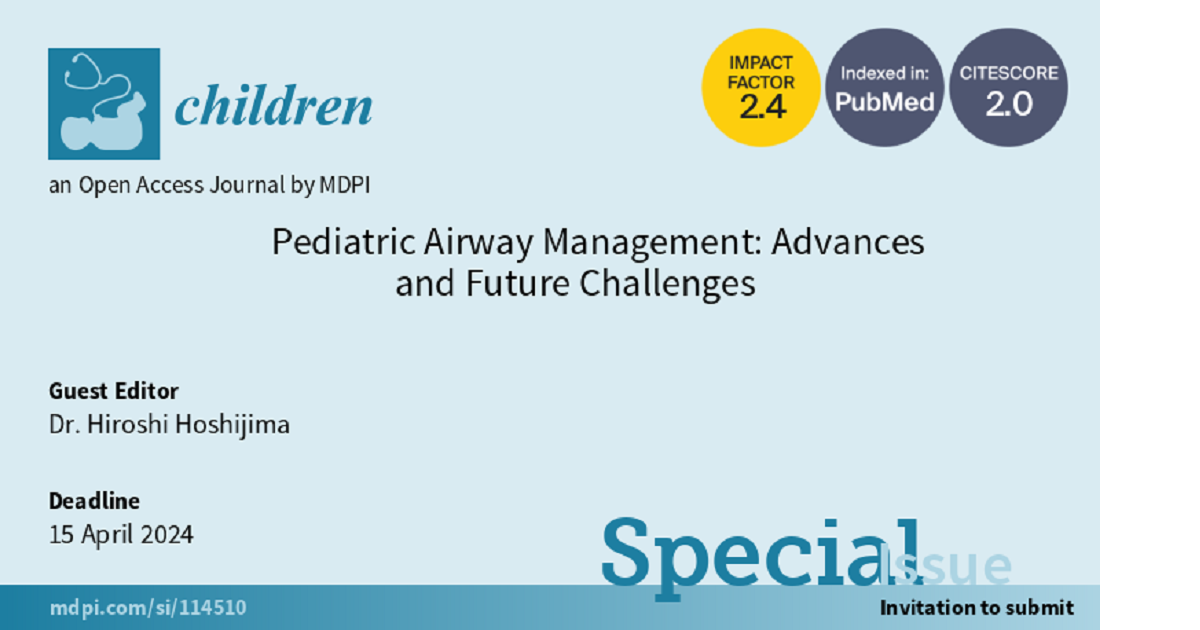Pediatric Airway Management: Advances and Future Challenges
A special issue of Children (ISSN 2227-9067).
Deadline for manuscript submissions: closed (15 April 2024) | Viewed by 8955

Special Issue Editor
Special Issue Information
Dear Colleagues,
Children are said to be difficult to intubate because they are anatomically smaller than adults. Additionally, because their lungs have not yet grown sufficiently, children are prone to hypoxia. Therefore, mask ventilation, tracheal intubation, and supraglottic device insertion should be carried out quickly and carefully.
In this Special Issue, we analyze whether new intubation devices (e.g., indirect laryngoscope) and new supraglottic devices (e.g., LMA type) can be used effectively and safely for mask ventilation, tracheal intubation, and insertion of supraglottic devices for children. In addition, we will discuss new methods for securing airways.
Recently, a meta-analysis was published showing that indirect laryngoscopes favor tracheal intubation in children. A meta-analysis comparing the degree of adhesion to the nasopharynx for LMA in children has also been published.
We aim to further deepen research on securing the upper airway in children and to enable safer anesthesia management and ICU management.
Dr. Hiroshi Hoshijima
Guest Editor
Manuscript Submission Information
Manuscripts should be submitted online at www.mdpi.com by registering and logging in to this website. Once you are registered, click here to go to the submission form. Manuscripts can be submitted until the deadline. All submissions that pass pre-check are peer-reviewed. Accepted papers will be published continuously in the journal (as soon as accepted) and will be listed together on the special issue website. Research articles, review articles as well as short communications are invited. For planned papers, a title and short abstract (about 100 words) can be sent to the Editorial Office for announcement on this website.
Submitted manuscripts should not have been published previously, nor be under consideration for publication elsewhere (except conference proceedings papers). All manuscripts are thoroughly refereed through a single-blind peer-review process. A guide for authors and other relevant information for submission of manuscripts is available on the Instructions for Authors page. Children is an international peer-reviewed open access monthly journal published by MDPI.
Please visit the Instructions for Authors page before submitting a manuscript. The Article Processing Charge (APC) for publication in this open access journal is 2400 CHF (Swiss Francs). Submitted papers should be well formatted and use good English. Authors may use MDPI's English editing service prior to publication or during author revisions.






